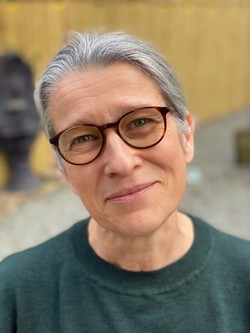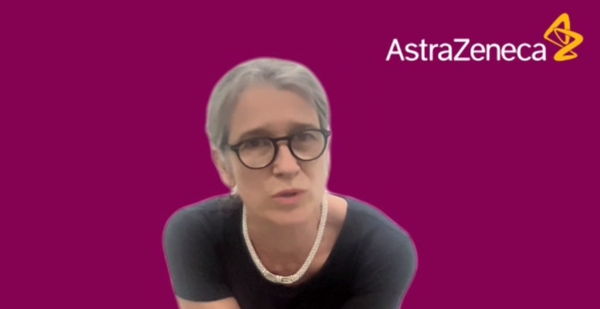AstraZeneca’s Forxiga has once again demonstrated the substance’s effect on reducing cardiovascular events in patients with more than 40 percent ejection fraction, diluting the value of ejection fraction in the treatment of heart failure.

Ejection fraction measures the amount of blood the heart's left ventricle pumps out to the body with each heartbeat. About 60 percent is considered stable.
According to the DELIVER phase 3 clinical trial data presented during the 2022 European Society of Cardiology meeting, Forxiga has been shown to significantly reduce the risk of cardiovascular death or hospitalization due to heart failure in patients with heart failure with reduced ejection fraction (HFrEF) followed by heart failure with midrange ejection fraction (HFmrEF) or heart failure with preserved ejection fraction (HFpEF).
Also, in the results of an integrated analysis of DELIVER and DAPA-HF phase 3 clinical trial, which has proven useful as an HFrEF treatment, the effect of Forxiga was consistently shown regardless of ejection fraction.
Along with the presentation during the ESC 2022, AstraZeneca has also published the results of DELIVER's phase 3 clinical trial in the New England Journal of Medicine and the integrated analysis results in Nature Medicine's Aug. 27 online edition.
Korea Biomedical Review exclusively met with Helen Yeh, Vice President of AstraZeneca's Cardiovascular, Renal, and Metabolism (CVRM) Therapy Area Biopharmaceuticals Medical, to see what the results of the trial mean for heart failure patients and an in-depth explanation of the results of the study.

Question: Could you explain why AstraZeneca conducted the DELIVER study?
Answer: The DELIVER is a study in patients with mildly reduced and preserved injection fractions. And it's a very relevant patient population.
When we think about heart failure, there are about 64 million patients worldwide, and typically maybe 50 percent of those patients have mildly reduced or preserved ejection fraction.
So until fairly recently, those patients didn't have very many treatment options.
And it's only in the last couple of years that we've seen treatments like the SGLT-2, for example, come through, and they have the potential to make a tremendous difference for patients.
Q: Is the company planning to include the treatment of heart failure with improved ejection fraction when it applies for an indication expansion in all countries or just select countries?
A: The regulatory submissions are underway, and we have quite an extensive plan.
All we can say now is that we have a comprehensive plan for regulatory submission.
Q: Unlike empagliflozin (Jardiance), in the case of Forxiga, there was no decreased efficacy even in patients with high ejection fraction. Before the DELIVER study, heart failure patients with an ejection fraction of 60 percent or more were considered another unknown area because drugs such as ARNI and empagliflozin showed a clear benefit in 40 to 60 percent of cases.
Is there a reason why only Forxiga is different? And how should we interpret this?
A: I'm glad you picked up on those results because I think the consistency across the whole range of injection fractions is quite striking.
We saw it in the primary results from DELIVER, but we also saw it when we looked at the pre-specified pooled analysis across DAFA-HF and DELIVER.
So if I talk about the latter, for example, we pooled all of the patients from DAPA-HF, which is the study and reduced injection fraction, and we pooled them with the DELIVER population and got over 11,000 patients.
We've got absolutely no attenuation effect as we went from the bottom end to the top end of the ejection fraction, and that clinically, I think, is potentially hugely important because what it tells us is it doesn't matter what the ejection fraction is but the effect of Forxiga appears to be the same.
And I think that's now leading many experts to say maybe we should start prescribing Forxiga when a patient first gets a diagnosis rather than waiting to clarify what kind of ejection fraction the patient has.
This means that patients don't have to wait for echocardiography to receive a prescription for an SGLT-2 inhibitor and then figure out the ejection fraction.
That's exciting because there's a lot of inertia around heart failure treatments, and such talks made by physicians mean that we can get these agents on board early, which is hugely important.
If we look at the primary composite endpoint in DELIVER was the composite of worsening heart failure and cardiovascular death, and the Kaplan Meier plot shows that the benefit of dapagliflozin occurs early.
You shouldn't be waiting to get these agents forward, and we need to move quickly, and I think now the notion that patients don't need to know the ejection fraction can allow them to initiate treatment sooner is clinically very important.
Q: Dr. Scott D. Solomon of the Brigham and Women's Hospital concluded yesterday that Forxiga will now be the foundational therapy for all heart failure patients regardless of ejection fraction. However, we are curious whether patients already using other drugs, such as diuretics, should take any precautions.
A: I would refer you to the prescribing indication, but prescribing information as to specific precautions
Even though dapagliflozin has a diuretic effect, I wouldn't consider it a diuretic. This is because there are many other benefits besides dapagliflozin's effect on diuretics.
Q: As the panelists said yesterday, SGLT-2 inhibitors seem to have expanded the limit of treating ejection fraction for heart failure treatment. Now, researchers are saying it is time to move toward personalized treatment for each patient according to the heart failure phenotype. We wonder if there are any Forxiga studies that AstraZeneca is conducting for this purpose. Also, if it is difficult for a company to conduct a trial in this area, we would like to know if the company is willing to support a researcher-led clinical trial.
A: We are truly invested in CVRM as a therapy area, and heart failure is no different.
Our ambition is to be the leader in heart failure, and a commitment to research and development comes with that.
We want to be able to understand all of the different phenotypes in heart failure and want to be able to treat all of those patients. So our ambition is to halt and even cure heart failure.
That's a bold ambition, but that will only come with a full understanding of the different phenotypes.
As part of that leadership, we are open to investigator ideas around research proposals.
We always have been and will continue to do that moving forward.
Q: Is there any studies that AstraZeneca is conducting in-house?
A: We have a robust pipeline in CVRM, so we're looking at several potential assets.
So, for example, we have a myeloperoxidase (MPO) inhibitor, and we are also looking at combinations of dapagliflozin, for example, with a mineralocorticoid receptor modulator (MRM) .
We have an active program from a pcsk9 inhibitor, a lipid control perspective, and also an interest in nonalcoholic
steatohepatitis.
Q: SGLT-2 inhibitors have gone beyond the prevention of heart failure and have now become a basic treatment that contributes to prolonging the life of patients with heart failure regardless of ejection fraction. We would like to know where the next frontier will be for the drug substance.
A: That's a great question, and we talked a little bit about the importance of research and development and understanding the different patient phenotypes.
We would be foolish to think that our current job is done because we have these amazing treatments, and we've shown in the DELIVER trial and other trials the lifesaving benefits of these treatments.
Guideline directed at medical therapy is not used in routine clinical practice as they should be.
That, for me, is also where we need to work hard because guidelines-directed medical therapy is at the heart of good patient care, and until we can drive that to the level that it needs to be, our job, even now, is not done.
Q: Korea is one of the countries where the use of SGLT-2 inhibitors in primary care institutions is insufficient. How would you summarize the strengths of SGLT-2 inhibitors or Forxiga to encourage Korean medical staff to use them?
A: there are lots of reasons.
I mean, we've talked about the efficacy already.
So we've seen the benefits of reducing heart failure hospitalization in terms of reducing cardiovascular death, but that's only for heart failure.
Dapagliflozin has been studied for chronic kidney disease and type 2 diabetes, with significant benefits seen in those patients. We've been talking about the efficacy, but dapagliflozin is also very well tolerated. And I think that would be important if we're talking about the broad utility of these patients and the reassurance that these agents can be prescribed.
Dapagliflozin is an oral agent that does not require titration and is simple to use. All of these beneficial factors could help with the uptake of the treatment.

